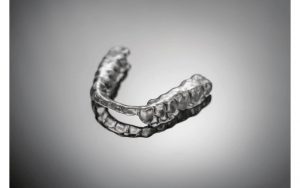A 70 year old woman requested for new teeth in the form of dentures to replace a few missing teeth in both jaws. She was on a tight budget and just wanted teeth at the back of her jaws to be replaced so that she could start chewing properly. One look inside her mouth revealed a completely “Collapsed bite” with no room at the back to give her new teeth. How did this happen to her over a span of 50 years??
The jaw joint can be compared to a door hinge. Now imagine the hinge of a door to wiggle constantly while the door is opening and closing. And imagine that the door can swing haphazardly without a specific resting point. It does not have a resting point when closed. The lower jaw is the door that hinges on the jaw joint. If teeth are lost at varying points in one’s life without being replaced immediately, the remaining teeth tend to drift into the space of the missing teeth. This creates an uneven biting plane and just like the door that does not have a resting point when closed, the lower jaw begins to lose those stable resting points when closed. This is what causes uneven pressure on all the teeth, the jaw joints, the muscles that help one chew and the surrounding bone. It depends on what the weakest link in one’s stomatognathic system is.
In the case of our 70 year old patient, the weakest link was her teeth. As she did not have a uniform biting surface, she began posturing her lower jaw forwards in order to try and find that resting spot. The teeth at the back were subsequently lost due to developing cracks resulting from the uneven forces. The teeth in the front became shorter and shorter with passing time risking exposure of the nerve that lies in the centre of the tooth. All in all a simple exercise of making dentures was not possible in her existing bite.
The treatment addressed the cause!
After “diagnosis and treatment planning” the following corrections were easily made.Her muscles were “deprogrammed” in which she was made to temporarily forget her habitual biting position which was anyway not working for her. And a new bite was recorded. By deprogramming her muscles her jaw joints were easily restored to their original posture within a few minutes. This is always a stable position. Space to construct new teeth was identified. The lower front teeth which had loss of tooth structure were repaired using composite. All of this was done chairside. How did I know that mere composite would last? This is because the position of the joints was now stable. The health of the dentition is dictated by the health of the jaw joints. Similarly the longevity of dentistry is dictated by the health of the jaw joints.
Following repair of the front teeth, the back teeth were replaced with a denture. Her bite was thus restored to what it had been almost 50 years ago!
I would like to add at this point that this kind of specialised dentistry is not elitist dentistry. It is dentistry for everyone. This kind of dentistry can be done on patients who want the latest technology to patients who are on a tight budget. The main concept is that the foundation on which the teeth rest be set right.


















